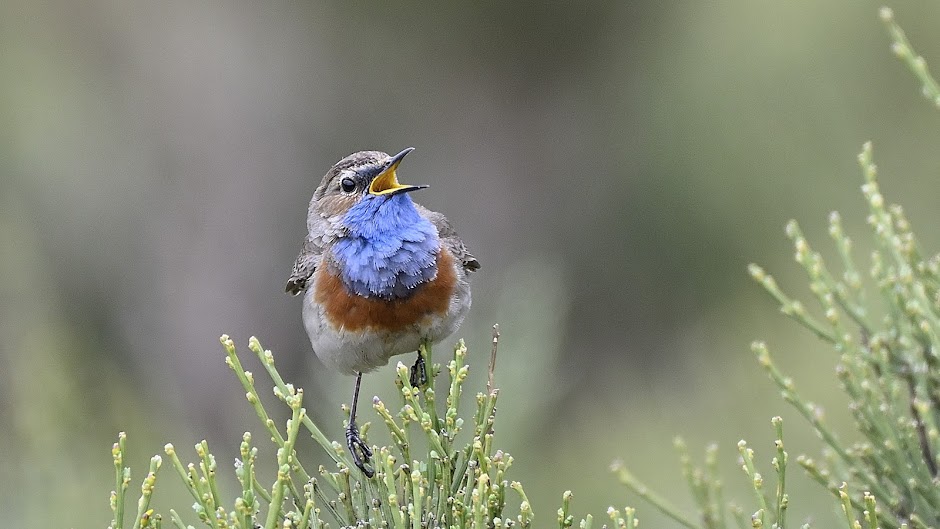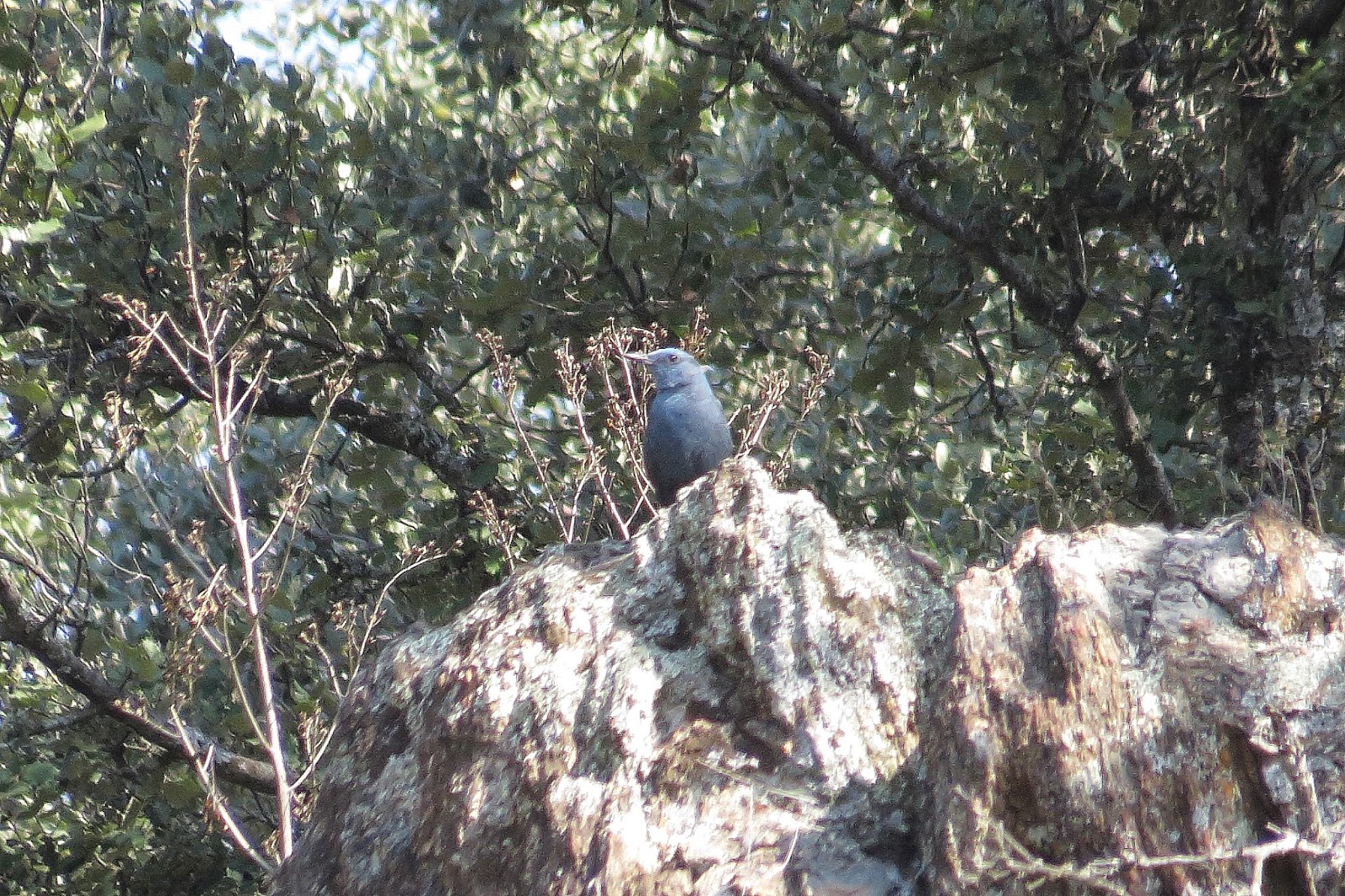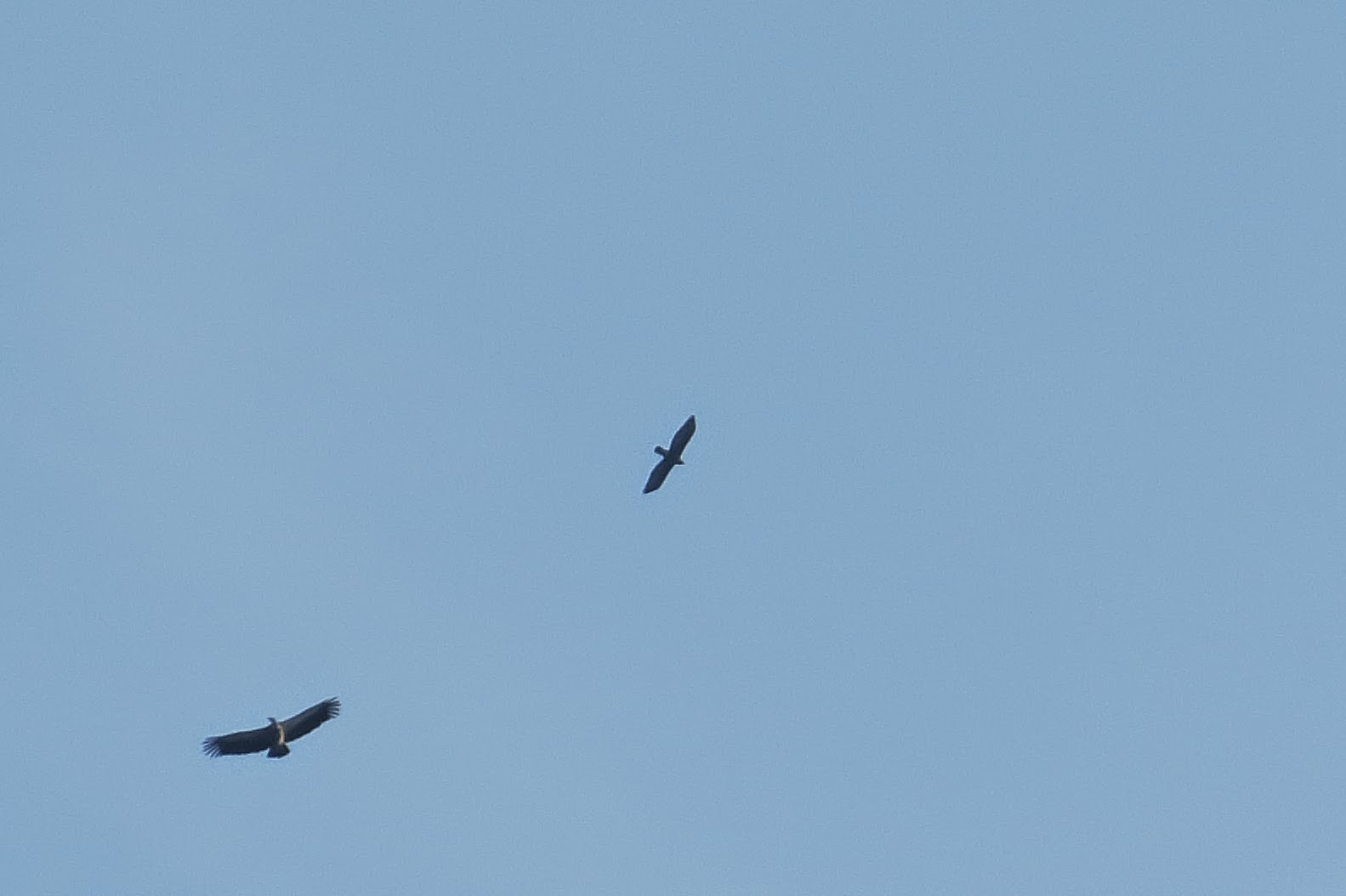Hola a tod@s.
Hello everyone.
Hoy os voy a enseñar algunas de las aves vistas en el Suroeste de la Comunidad de Madrid en una visita realizada a finales de marzo.
Today I'll show you some of the birds seen in the Southwest of the Community of Madrid during a visit in late March.
Tuvimos sol y una temperatura fenomenal lo que unido a la cantidad de grandes rapaces diurnas que tuvimos la suerte de observar se convirtió en un día inolvidable. En total vimos 4 águilas reales (Aquila
chrysaetos) y 5 águilas imperiales ibéricas (Aquila
adalberti) además de buitres leonados (Gyps
fulvus) y negros (Aegypius
monachus).
We had sun and a great temperature which together with the number of Large Diurnal Raptors that we were lucky enough to observe became an unforgettable day. In total we saw 4 Golden Eagles, 5 Spanish Imperial Eagles plus Monk and Griffon Vultures.
Pero lo que más nos gustó fue el poder observar un ejemplar adulto de cigüeña negra (Ciconia
nigra) en el cauce de un río. Toda una sorpresa inesperada.
But what we liked most was being able to observe an adult Black Stork (Ciconia nigra) in a riverbed. An unexpected surprise.
Ni que decir tiene que en ningún momento nos apartamos de las rutas habilitadas para dar paseos y que no se molestó a ningún ave de las que aquí aparecen fotografiadas. La pena ha sido que los avistamientos fueron a bastante distancia con lo que las fotos son, en algunos casos, simplemente testimoniales.
Needless to say that at no time we move away from authorized walking routes and we did not bother any bird which is shown here photographed. The pity is that the sightings were from quite a distance so the photos are, in some cases, just testimonees.
Buitre negro (Aegypius
monachus).
Monk Vulture.
Aguila real (Aquila chrysaetos).
Golden Eagle.
A lo largo de todo el día pudimos disfrutar de muchos pinzones vulgares (Fringilla
coelebs).
Throughout the whole day we enjoyed many Common
Chaffinch.
Al igual que de varios grupos de escribanos montesinos (Emberiza
cia). En la foto una hembra.
As well as several groups of Rock Buntings. In the photo a female.
Otra más.
Another one.
Aun se observaban mosquiteros comunes (Phylloscopus
collybita).
Even Chiffchaffs were observed.
Los roqueros solitarios (Monticola
solitarius) eran muy abundantes y fáciles de encontrar pues no paraban de cantar.
Blue Rock
Thrushs were abundant and easy to find as did not stop singing.
También vimos muchos rabilargos ibéricos (Cyanopica
cookii).
We also saw many Azure-winged
Magpie.
Un macho de escribano montesino (Emberiza cia).
A male of Rock Bunting.
Sin embargo las hembras de roquero solitario (Monticola solitarius) eran más difíciles de encontrar.
However females of Rock Thrush were harder to find.
También vimos algunos cuervos (Corvus
corax).
We also saw some Common
Ravens.
Y algunos ánades reales (Anas
platyrhynchos) aunque casi en su totalidad eran machos. Las hembras deben haber comenzado con la incubación.
And some Mallards although almost all were male. Females should have started with incubation.
Este verdecillo (Serinus
serinus) cantaba primorosamente.
This Serin sang beautifully.
Otro macho de roquero solitario (Monticola solitarius).
Another male of Blue Rock Thrush.
Y otro bonito macho de escribano montesino (Emberiza cia).
And another beautiful male of Rock Bunting.
El mismo que en la foto anterior.
The same as in the previous photo.
Algunos aviones roqueros (Ptyonoprogne
rupestris) estaban cogiendo barro para construir sus nidos.
Some Crag
Martins were taking mud to build their nests.
Las primeras golondrinas dáuricas (Hirundo
daurica) que veía este año en la Comunidad de Madrid.
The first Red-rumped
Swallow I saw this year in the Community of Madrid.
Y también la primer curruca carrasqueña (Sylvia
cantillans) de la temporada. En la foto un macho.
And also the first Subalpine Warbler of the season. In the photo a male.
Al medio día una pareja de águila imperial ibérica (Aquila
adalberti) decidió echarse a volar.
At noon a couple of Spanish Imperial Eagles decided to start flying.
El otro miembro de la pareja.
The other member of the pair.
Y no muy lejos suyo se levantó la tercera águila imperial ibérica (Aquila adalberti) que nos entretuvo con un cicleo y luego pasó muy cerca de donde estábamos.
And not far from the pair this third Spanish Imperial Eagle took off and entertained us with a circular flight and then passed close to where we were.
Un ave preciosa.
A beautiful Bird.
Cuando decidimos almorzar esta águila real (Aquila
chrysaetos) nos interrumpió pero no nos importó lo más mínimo.
When we decided to have lunch this Golden Eagle nterrupted us but it did not mind at all.
Una bonita mariposa de los olmos (Nymphalis polychloros).
A pretty Large Tortoiseshell.
Una pareja de trepadores azules (Sitta
europaea) estaba muy atareada haciendo su nido.
A couple of European Nuthatches was very busy making their nest.
Y un poco lejos vimos a este mirlo acuático (Cinclus
cinclus). Más tarde disfrutaríamos de una pareja a placer.
And a little far we saw this Dipper. Later we enjoied a couple at pleasure.
Cuando vi esta estampa en el cielo mi alegría fue inmensa. Se trataba de una cigüeña negra (Ciconia
nigra).
When I saw this silhouette in the sky my joy was immense. It was a Black Stork.
Había algunas parejas de alondras totovías (Lullula
arborea).
There were some couples of Wood Larks.
Y entre las ramas de los árboles alcanzamos a ver esta maravilla de adulto de cigüeña negra (Ciconia nigra).
And through the branches of the trees managed to see this wonderful adult of Black Stork.
El momento fue breve pero inolvidable.
The moment was brief but unforgettable.
Un poco después pudimos ver como esta águila imperial ibérica (Aquila adalberti) hacia este espectacular picado.
Shortly after we could see this Spanish Imperial Eagle making this spectacular diving.
Y vi que iba dirigida a expulsar a esta
And I saw that it was directed to expel this
Aguila real (Aquila
chrysaetos) que llevaba una presa en sus garras.
Golden Eagle carrying a prey in its talons.
Y esta otra fue la ultima águila real (Aquila chrysaetos) que vimos este día.
And this one was the last Golden Eagle we saw this day.
Y cuando decidimos regresar, de camino a la furgoneta nos encontramos con esta preciosa pareja de mirlos acuáticos (Cinclus cinclus) que nos entretuvo un buen rato con su incesante búsqueda de alimento.
And when we decided to return, on the way to the van we found this lovely pair of Dippers who entertained us for a while with their non stopping search of food.
Y con estas bonitas imágenes me despido de vosotros hasta la siguiente entrada.
And with these beautiful images I say goodbye to you until next post.























































































































